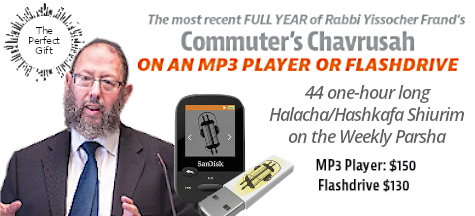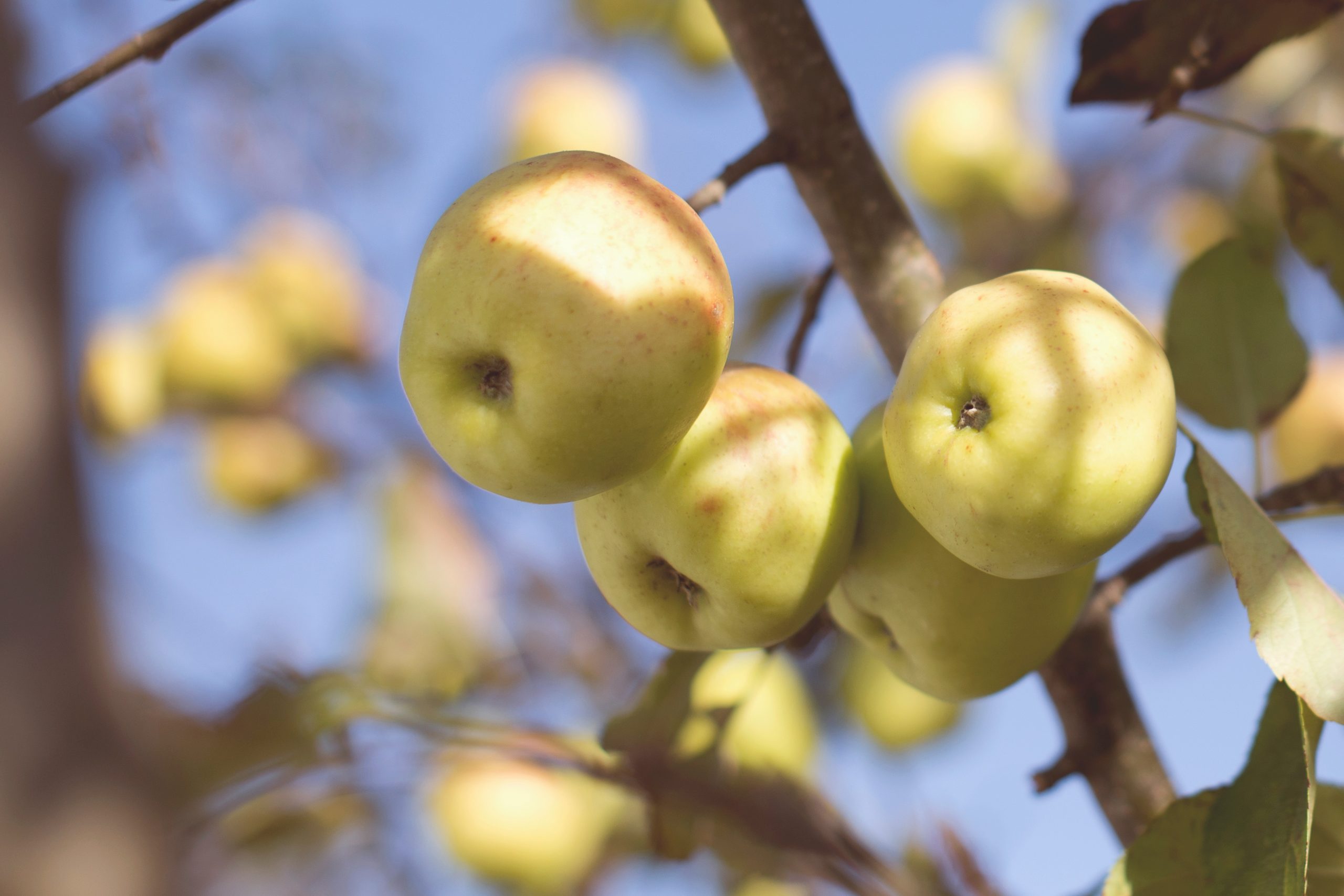
 This dvar Torah was adapted from the hashkafa portion of Rabbi Yissocher Frand’s Commuter Chavrusah Series on the weekly portion: Pekudai Pesach 2025 – Here We Go Again: Erev Pesach on Shabbos. Good Shabbos & Chag Kosher V’somayach!
This dvar Torah was adapted from the hashkafa portion of Rabbi Yissocher Frand’s Commuter Chavrusah Series on the weekly portion: Pekudai Pesach 2025 – Here We Go Again: Erev Pesach on Shabbos. Good Shabbos & Chag Kosher V’somayach!
Rather than speaking about the parsha, I want to share with you a beautiful ha’ara (insight) on the Haggada from the sefer Yerech Lamoadim by Rav Yerucham Olshin Shlita, one of the Lakewood Roshei Yeshiva.
Most people’s sedarim start with the obvious question about ha lachma anya being written in Aramaic, and then discuss the ma nishtana, and then the arba bonim – the chochom, the rasha, etc. Then it kind of peters out. Here is a very beautiful ha’ara on charoses.
According to the Mishna in Mesechta Psachim, Rav Eliezer bar Rebbi Tzadok says that charoses is a mitzva. The Chachomin argue and say that charoses is just to counteract the kappa in the marar. But Rav Eliezer bar Rebbi Tzadok says that it is a mitzva. You need to use charoses. The Gemara asks, what is the mitzva? Rav Levi says that charoses is zecher l’tapuach (in remembrance of the apple). Rav Yochanan says that charoses is zecher l’tit (in remembrance of the mortar).
Abaye says that in order to fulfill both opinions, charoses must contain apple to give it a certain tang, commemorating the apple trees, and it must be thick like cement, commemorating the tit. The charoses is a double symbol – of the tapuach (apple) and of the tit (mortar).
The zecher of the tit is a remembrance for the terrible shibud (slavery) that they experienced in Mitzrayim. As the Maharal writes, there is nothing more difficult than working with tit – making the mortar and even needing to find the straw. The charoses is a zecher for the shibud Mitzrayim.
What is the tapuach? Chazal describe the wondrous births of Jewish children in Mitzrayim: “In reward for the nashim tzidkonios (righteous women) in that generation, the Jews were redeemed from Mitzrayim” (Sotah 11b). What did these nashim tzidkonios do? They carried hot water for washing as well as fresh cooked fish to their husbands who were working in the fields, to revive them from their heavy work, and through this they brought more children into the world, despite the shibud and harsh decrees.
The women subsequently gave birth painlessly under the apple trees, far from the Mitzrim. That is what the pasuk means in Shir Hashirim, tachas hatapuach orrarticha (I roused you under the tapuach). Hashem then sent malachay hashorays (angels) down from shomayim (heaven) to act as midwives and care for the babies. That is what Chazal mean by zecher l’tapuach.
Rav Yerucham Olshin’s question is, how can something be a symbol of two opposite things? On the one hand, charoses needs to be thick, zecher l’tit like mortar, which is a symbol of the shibud. On the other hand, zecher l’tapuach commemorates the open miracle that they gave birth to the babies without labor pain and with malachay hashorays from shomayim caring for the babies. How can something simultaneously be zecher l’tit and zecher l’tapuach?
Rav Yerucham Olshin answers using a vort that we have said in the past. By mechiras (the sale of) Yosef, the pasuk says that Yosef was taken down to Mitzrayim by Yishmaelim. The Torah publicizes that these Yishmaelim were transporting spices to sell in Mitzrayim. Why were these Arabs that bought Yosef carrying spices? It was in order to teach us the reward of the righteous. Rashi quotes Chazal that the typical practice of Arabs is to sell foul smelling oil. Some things never change. So why were they selling spices? They should have been selling oil.
Rashi explains that that the Ribbono Shel Olam is precise in His execution of punishment. Yosef needed to be sold and transported to Mitzrayim. However, Hashem did not want Yosef to suffer from foul smelling oil during the trip down to Mitzrayim. Therefore, Hashem arranged through hashgacha pratis (Divine providence) that this caravan would be loaded with the pleasant aroma of spices instead of oil.
Rav Mordechai Pogromansky (whom Rav Gifter always used to quote as being the illuy (prodigy) from Telshe) asks, do you really think Yosef was thinking that even though he was being taken to Mitzrayim as a slave, at least the caravan smelled of good spices? Did he really care? Imagine if a person is put in prison but is given a great pillow. Wonderful! He is behind bars and he has lost his freedom but at least he has a nice pillow. When a person is being taken to jail, what difference does it make to him if he is being transported in the back of a Lincoln Town Car or the back of a paddy wagon? It is unlikely that Yosef, who had to psychologically deal with his separation from his parents, his family, his homeland, to say nothing of his freedom, would be very consoled by the fact that he had the “luck” of being in a pleasant-smelling caravan! What is this Rashi teaching us?
Rav Mordechai Pogromansky explains that herein lies a very fundamental lesson. The smell was not the point. Rather, Yosef must have felt abandoned. However, the ability to see the yad (hand of) Hashem within ‘tzoros’ (trials and tribulations) mitigates the sense of abandonment. People throw up their hands in despair when there seems to be no hope. If a person can see the silver lining in the cloud — but more importantly — if a person can see the yad Hashem in the cloud, then he will have the attitude: “I am going to get out of this! I have not been forsaken by the Ribono Shel Olam.” True, the situation remained very bad but when Yosef saw the strange phenomenon of an Arab caravan transporting spices, he realized that the Ribono Shel Olam was still with him and watching over him, regardless of the gravity of the situation. The nature of such a sign may be insignificant but the presence of the sign that Hashem still cares is of tremendous importance. Yosef had hope because he saw that the Ribono Shel Olam was watching over him.
Rav Yerucham Olshin is saying that it was the same thing in Mitzrayim. The shibud Mitzrayim was terrible. Their children were killed, etc., etc. It may have seemed as if Hashem abandoned them. It went on for generation after generation for over two hundred years. They must have felt, “Keili, Keili, lama azavtani” (My G-d, my G-d, why have you forsaken me)?
Therefore, Hashem did things during the shibud Mitzrayim that demonstrated that He still cared about them. The Ribono Shel Olam performed nissim (miracles) for them. The women had babies without tzar leida (labor pain). Malachay hashorays came to act as midwives and care for the babies. These were nissim geluyim (open miracles) occurring in Mitzrayim during the shibud, while experiencing a truly horrible existence.
So, is there a contradiction between zecher l’tit and zecher l’tapuach? Rav Yerucham explains that there is not a contradiction because in fact charoses is a zecher for both. During the tit experience, they also experienced the tapuach, when Hashem demonstrated that He has not forgotten them.
That is something that we have also seen in our time, during the last sixteen months. As we all know, October 7 was a horrible, horrible day. And it has not ended. There are still 59 hostages in Gaza. The number of people killed and wounded and the soldiers that have been killed then and since then is horrible.
At the same time, we all should remember that Hashem has performed nissim geluyim for us during this terrible period. So many missiles were shot at Eretz Yisroel that caused almost no damage. The exploding pagers. How many karbanos (sacrifices) would there have been from the attempted simultaneous bus bombings that blew up prematurely in empty parking lots (and then even more were discovered) instead of blowing up during rush hour? The entire strategic situation in the Middle East has changed. Hamas is half dead. Hezbollah is a shadow of its former self, seemingly unable to continue to fight. Syria collapsed. Iran is on its heels.
So, during this terrible tzara, while we are very much experiencing the tit, we are also experiencing tachas hatapuach orrarticha. We need to keep this in mind. Hashem made nissim. We need to be makir (recognize) that.
On a personal level also, even if a person experiences a difficult situation, every once in a while, he may see the yad Hashem demonstrating that Hashem is still taking care of him. That is why Rav Eliezer bar Rebbi Tzadok holds that charoses is a mitzva, zecher l’tit and zecher l’tapuach – a zecher for the terrible shibud but also a zecher for the yad Hashem that the Ribono Shel Olam showed us even during the shibud Mitzrayim.
.
Transcribed and edited by Dovid Hoffman; Baltimore, MD [email protected]


